Scientists claim they’ve uncovered the TRUE ‘origin story’ behind how the Great Sphinx was built 4,500 years ago in Egypt
Egypt’s Great Sphinx at Giza is shrouded in mystery, but a new study may have revealed the ‘origin story’ of the ancient mythical creature made of limestone.
The ancient Egyptians carved the face onto the massive formation, but scientists from New York University have determined that the shape – the body and head of a lion – was the work of Mother Nature.
The team replicated the environmental conditions in the area 4,500 years ago and found that the wind moved around the massive rock, forming one of the most recognizable images in the world.
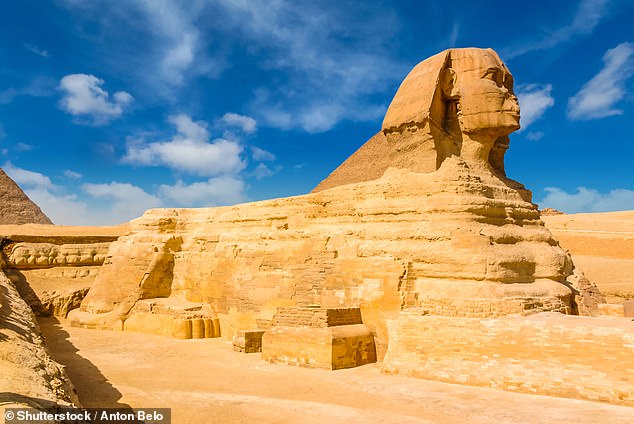
Egypt’s Great Sphinx at Giza is shrouded in mystery, but a new study may have uncovered the ‘origin story’ of the ancient mythical creature made of limestone
Leif Ristrof, associate professor at New York University and senior author of the paper, said: ‘Our findings provide a possible ‘origin story’ for how sphinx-like formations could be created by erosion.
‘Our laboratory experiments have shown that surprising Sphinx-like shapes can in fact emerge from materials eroded by fast currents.’
The team used a theory proposed in 1981 by geologist Farouk El-Baz, who suggested that the Sphinx Formation initially had a flat shape, which was gradually eroded by the wind.
The former NASA scientist states that the builders of the pyramids were aware of these natural processes and built their pointed stone structures to last, just like the mounds.
“Today, the Pyramids of Giza exist in perfect harmony with their windswept environment,” El-Baz shared in a 2011 statement.
“If the ancients had built their monuments in the shape of a cube, a rectangle, or even a stadium, they would have been swept away long ago by the ravages of wind erosion.”
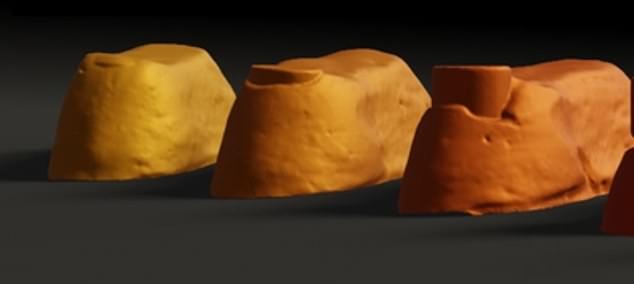
The team used mounds of soft clay with harder, less erodible materials mixed and matched, the formations capturing what the landscape once was like in eastern Egypt
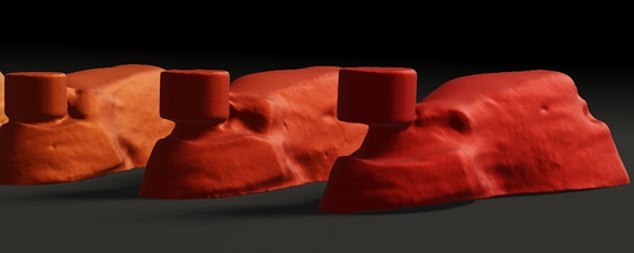
They then washed these formations with a fast-flowing stream of water (to mimic the wind) which carved and reshaped them, ultimately giving them a Sphinx-like appearance.
He also theorized that a yardang-like prominence, carved naturally by the wind, may have formed on the Giza Plateau.
“The ancient engineers may have chosen to reshape the head in the image of their king,” El-Baz said.
‘They also gave it a convincing lion-like body, inspired by shapes they encountered in the desert. To do this, they had to dig a ditch around the natural outcrop.’
The new study replicated the yardangs, unusual rock formations found in deserts resulting from wind-blown dust and sand.
To achieve this, the team used mounds of soft clay with harder, less erodible materials mixed in. The formations captured what the landscape once was in eastern Egypt.
They then washed these formations with a fast-flowing stream of water – to mimic the wind – which carved and reshaped them, ultimately giving them a Sphinx-like appearance.
The harder or more resistant material became the lion’s ‘head’, and many other features – such as an undercut ‘neck’, ‘paws’ that rested on the ground in front, and a curved ‘back’ – developed.
“Our results provide a simple origin theory for how sphinx-like formations can arise from erosion,” says Ristrof.
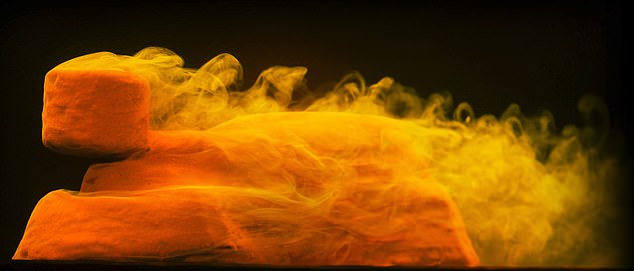
The team used a fluorescent die to simulate how the wind carved the limestone some 4,500 years ago
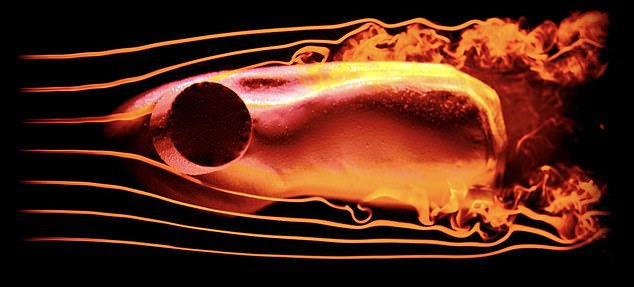
The research was based on a forty-year-old theory that suggested that desert winds created the original shape of the Sphinx.
“Yardangs that resemble sitting or recumbent animals do indeed exist today, and they support our conclusions.”
‘The work could also be useful to geologists because it reveals factors that influence rock formations, namely that they are not homogeneous or uniform in composition.
‘The unexpected shapes arise from the way the flows are diverted around the harder or less erodible parts.’
Most Egyptologists think that the Great Sphinx represents the likeness of King Khafra.
Others also believe that Djadefre, Khafra’s older brother, built the Sphinx in honor of his father, Khufu.
This would place the construction time somewhere between 2550 BC and 2450 BC.
However, the limited evidence linking the Sphinx to Khafra is circumstantial and somewhat ambiguous.
The Great Sphinx remained hidden until 1917, when an excavation team led by Italian archaeologist Giovanni Battista Caviglia uncovered the beast’s chest.
And it was not until 1887 that the chest, legs, altar and plateau were fully visible.
